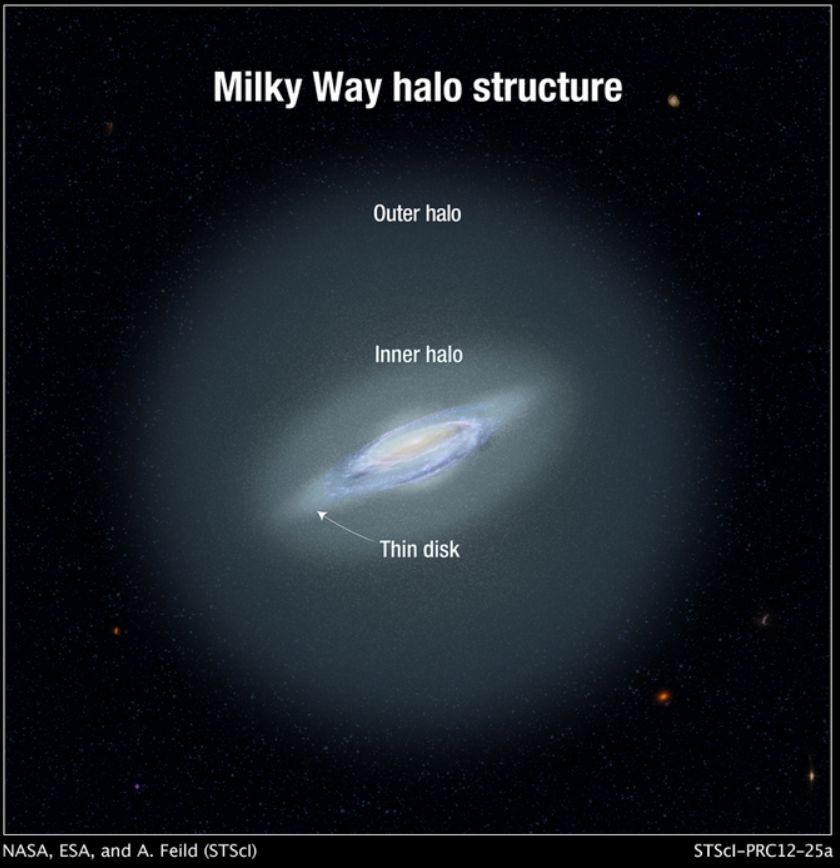Thanks to incredible luck, astronomers were able to detect over 200 distant variable stars, known as RR Lyrae stars – “the way their brightness varies looks like an EKG—they’re like the heartbeats of the galaxy” – in the Milky Way’s stellar halo.
One of the most distant stars discovered is located more than a million light-years from Earth, almost half the distance to Andromeda, our neighboring galaxy which is about 2.5 million light-years away.
In the stellar halo around the Milky Way, astronomers have found more than 200 faraway variable stars called RR Lyrae stars.
The most distant of these stars is located more than a million light years away from Earth. This is over half the distance to our neighboring galaxy, Andromeda, which is around 2.5 million light years away.
RR Lyrae stars are very reliable “standard candles” for determining interstellar distances because to their brilliance and distinctive pulsations. These new discoveries have enabled scientists to map the Milky Way’s halo to its furthest reaches.

“This study is redefining what constitutes the outer limits of our galaxy,” remarks Raja GuhaThakurta, professor and chair of astronomy and astrophysics at UC Santa Cruz. “Our galaxy and Andromeda are both so big, there’s hardly any space between the two galaxies.”
According to GuhaThakurta, the component of our galaxy known as the stellar halo is far larger than the disk, which has a diameter of around 100,000 light years. Our solar system is located inside one of the spiral arms of the disk. There is a core bulge in the disk, and beyond it, the halo, which includes the earliest stars in the galaxy, stretches out for hundreds of thousands of light-years in all directions.
“The halo is the hardest part to study because the outer limits are so far away,” explains GuhaThakurta. “The stars are very sparse compared to the high stellar densities of the disk and the bulge, but the halo is dominated by dark matter and actually contains most of the mass of the galaxy.”
The new study’s lead author, Yuting Feng, a PhD student at UC Santa Cruz who collaborates with Guha Thakurta, will discuss their results in two lectures on January 9 and 11 at the American Astronomical Society conference in Seattle.
Previous modeling studies, as stated by lead author, Yuting Feng, had shown that the star halo should stretch out to around 300 kiloparsecs, or 1 million light years, from the galactic center. (Astronomers use kiloparsecs to measure galactic distances; one kiloparsec is equivalent to 3,260 light years.) The 208 RR Lyrae stars that Feng and his team found were located between 20 and 320 kiloparsecs away.
“We were able to use these variable stars as reliable tracers to pin down the distances,” Feng adds. “Our observations confirm the theoretical estimates of the size of the halo, so that’s an important result.”
The Next Generation Virgo Cluster Survey (NGVS) is a program that used the Canada-France-Hawaii Telescope (CFHT) to investigate a cluster of galaxies far from our own Milky Way. The survey wasn’t meant to find RR Lyrae stars, so researchers had to look for them in the data. The giant elliptical galaxy M87 is part of the Virgo Cluster, which is a large group of galaxies.
“To get a deep exposure of M87 and the galaxies around it, the telescope also captured the foreground stars in the same field, so the data we used are sort of a by-product of that survey,” Feng adds.
GuhaThakurta claims that the team was able to characterize RR Lyrae in the most accurate and trustworthy manner possible at these distances because to the high quality of the NGVS data. Old stars like RR Lyrae have very specific physical properties that cause them to grow and shrink in a cycle that happens over and over again.
“The way their brightness varies looks like an EKG—they’re like the heartbeats of the galaxy—so the brightness goes up quickly and comes down slowly, and the cycle repeats perfectly with this very characteristic shape,” GuhaThakurta adds. “In addition, if you measure their average brightness, it is the same from star to star. This combination is fantastic for studying the structure of the galaxy.”
There are many stars in the sky, some brighter than others. However, it is not always easy to distinguish whether a star seems brilliant because it is particularly luminous or because it is relatively nearby. Astronomers may identify an RR Lyrae star by its unique pulsations, then use its measured brightness to determine how far away it is. However, the steps are not straightforward. Objects that are further away, such quasars, may seem to be RR Lyrae stars.
“Only astronomers know how painful it is to get reliable tracers of these distances,” Feng remarks. “This robust sample of distant RR Lyrae stars gives us a very powerful tool for studying the halo and testing our current models of the size and mass of our galaxy.”
On January 9 and 11, 2019, during the American Astronomical Society conference in Seattle, Yuting Feng, collaborating with GuhaThakurta, will present the results of their new research.
Image Credit: Getty
